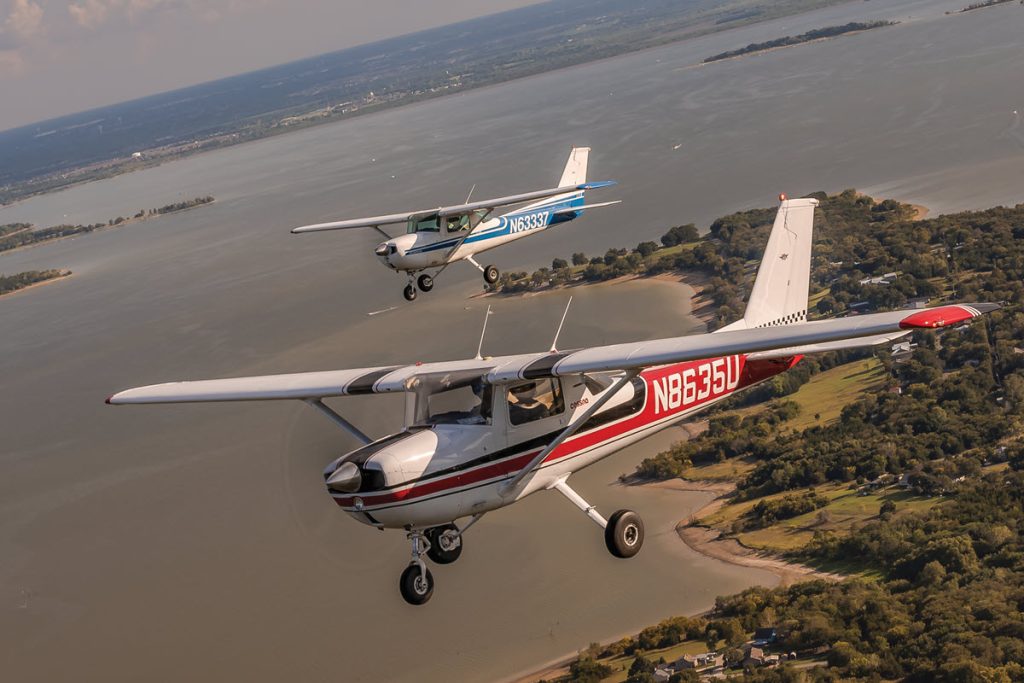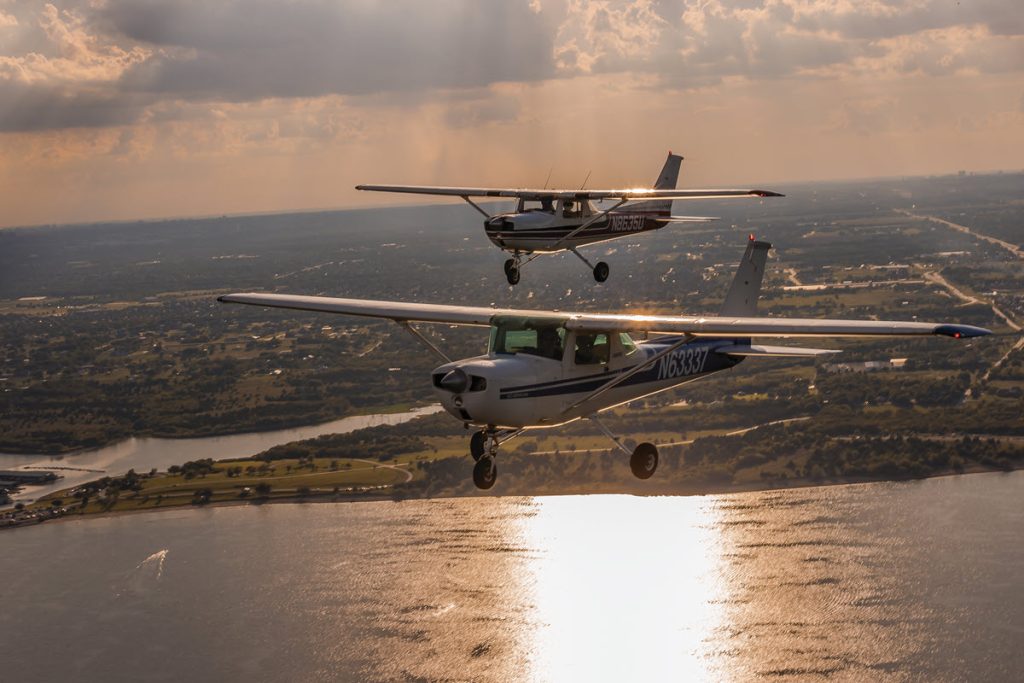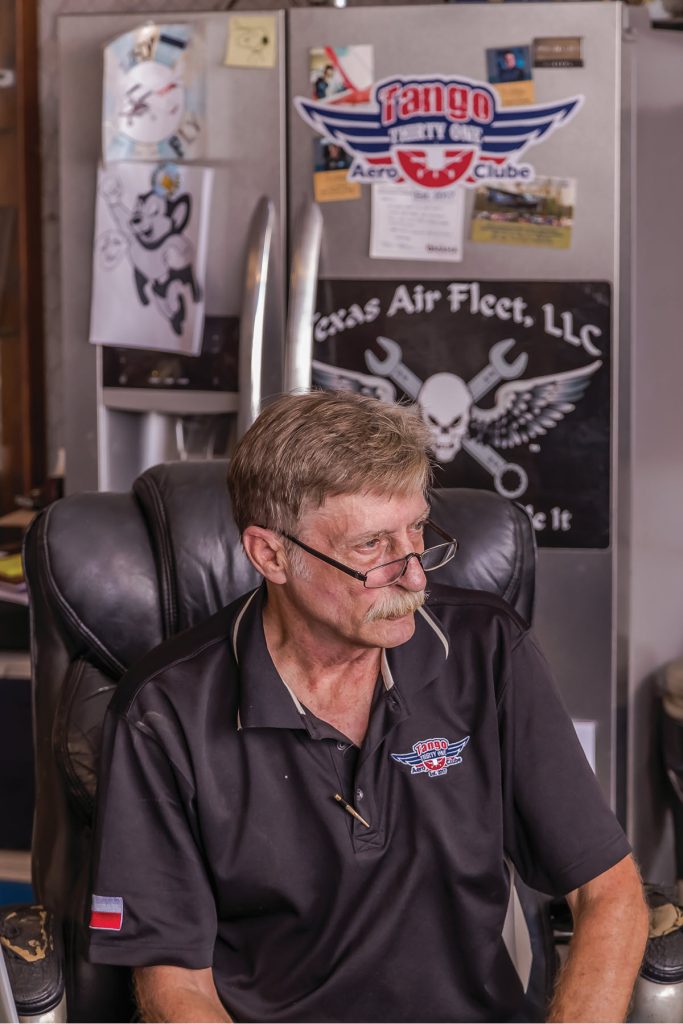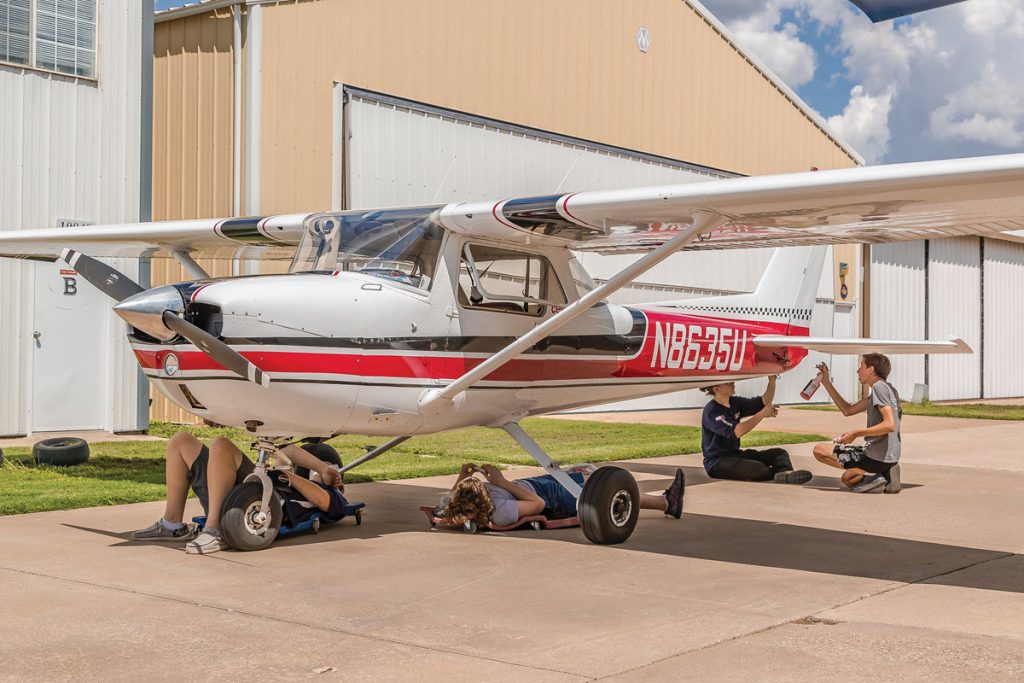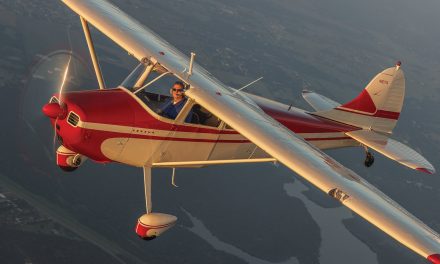
By Dan Brownell
Since the Cessna 150 debuted in 1957, it’s played a central role in helping students earn their pilot’s certificate. It’s also played a major role in the success of the Tango Thirty One Aero Clube (t31aeroclube.com) based at Aero Country Airport (T31) in McKinney, Texas, about 35 miles northeast of Dallas.
The iconic 150 accounts for three of the four planes the Clube has restored. That’s on purpose. The Clube purposely chose the dependable 150 to be its foundation because it’s one of the easiest to learn on and maintain, it’s light on fuel, and it’s one of the more affordable planes to purchase and insure, considering the skyrocketing cost of all Cessnas, even legacy models.
The popular aviation youth group, named after their airport’s identifier, T31, has been running since 2015. The spelling of Clube with the “e” carries over from a Brazilian aviation club that the group’s director was involved with earlier in his career. He liked the spelling of the word, and he kept it for his new group in McKinney.
How the Clube Started
The Clube’s founder and director is veteran pilot Kevin Lacey, who was featured in the Discovery Channel television series Airplane Repo, which ran from 2010 to 2015. The show highlights the process of recovering aircraft on behalf of banks whose clients have become delinquent on their loan payments. Kevin brings a wealth of aviation experience to the nonprofit group as both a pilot and mechanic. He earned his private in 1974. Even though it was not a career goal, he repossessed his first airplane just a year later. He’s also a CFI, A&P/IA, and has been both a maintenance director and corporate jet pilot. Kevin now owns and operates Texas Air Fleet (texasairfleet.com), which specializes in aviation finance, leasing, deliveries, repossessions, and related services.
During one of his trips to Sun ‘n Fun years back, Kevin became acquainted with Michael Z, who is the director of the Lakeland Aero Club. He was impressed with how the group was making a positive impact with teens and getting them interested in aviation. “I got fascinated with those guys because I saw what they were doing,” Kevin said. “I thought that’s pretty darn cool.”
He also met Ernie Butcher of the Eagle’s Nest Project. After being invited to talk to the students at a local high school about careers in aviation, Kevin decided to introduce Mr. Butcher and the Eagles Nest Project to the McKinney High School program called the McKinney Aviation Academy. Together, they brought the Eagles Nest project to the school, where a team of mentors (including Kevin) supervised the high school students as they built an RV-12 at the McKinney National Airport (TKI).
“There were several students in the class who were really enthused about what they were doing, so I started flying my Cessna 172 over to TKI and giving Young Eagle flights after class. As time went by, they realized I was based at Aero Country and before I could fly home and get to my hangar, the field across the street would be full of cars belonging to these same high school students. They wanted more; the high school program wasn’t enough for them.
“They were asking, ‘Hey, can we hang out with you guys?’ These were the youngsters from the high school class who really wanted to be part of aviation. My friends and I decided that we needed to find something for these teenagers to do.”
Kevin took the next step to make the Clube a reality and contacted Michael Z of the Lakeland Aero Clube for some consultation in the formation of a youth aviation club. The next step was to find a project airplane for the Clube. Unlike the Lakeland Aero Clube, which focuses primarily on Piper Cubs and Taylorcrafts, the Tango Thirty One Aero Clube began looking for a Cessna 150.
“We found a 1967 Cessna 150 in a barn out in East Texas, and we went and picked it up, and these youngsters, in just a little over a year, took it from the trailer to a flying machine.”
The plane needed a lot of work which, with Kevin’s expertise, wasn’t a problem. He used his A&P/IA experience to supervise every step of the process and taught the students what they needed to know about bringing the plane back to flyable condition. “They did every bit of the work. You can visit our Facebook page [@t31aeroclube] and our web page and find a bunch of pictures of ‘Casper,‘ which is what we named the first airplane that we restored,” Kevin said.
“All the restoration work is done by these young Aero Clube members. I might grab a torque wrench out of somebody’s hand to verify the torque value that’s set on it but, other than that, they build everything. They take it apart, refurbish it, and they put it back together again.
“We sign off the youngsters working towards their A&P to go take the test after 36 months of experience. We also train and sign off the student pilots for their private pilot check rides. We like to take some of our sponsorship money and send the A&P applicants to a test prep class and we try to help pay the fuel bills for the student pilots.”
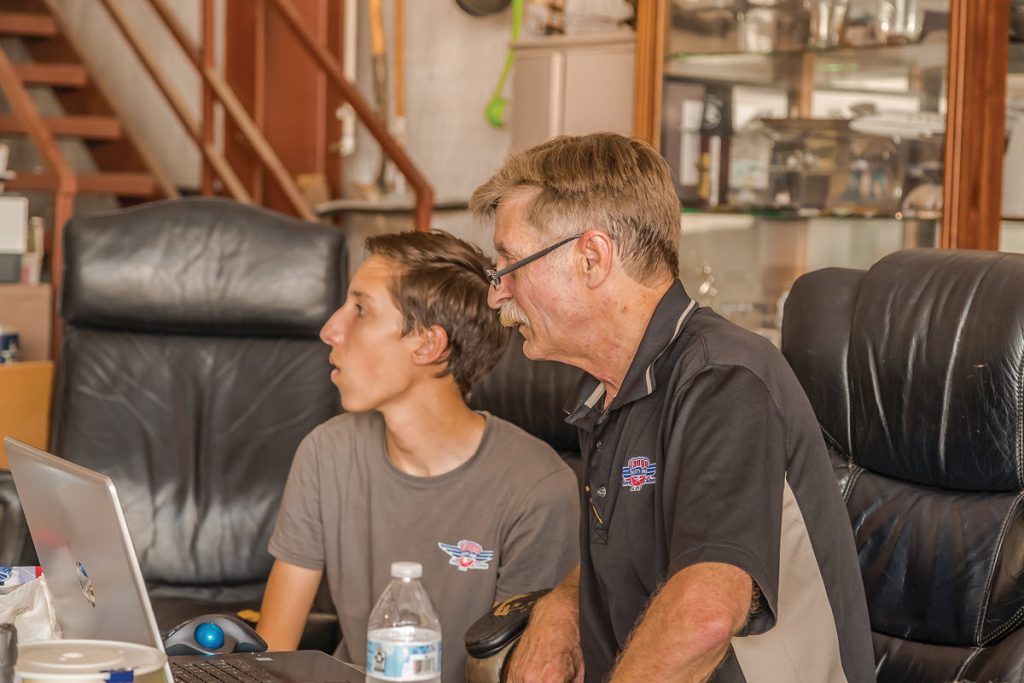
Pressing On With the Mission
The Clube didn’t stop with restoring “Casper.” They sold a donated airplane that didn’t meet their needs to pay for another 150, a 1976 model they affectionately call 35 Ugly, based on its N number 8635U and the fact that it was in such poor shape when they purchased it. And using funds from an insurance settlement, they bought a third 150 they called 337, named after the last three digits in its N number.
The students don’t just learn how to work on the planes. They can also earn their pilot’s certification for just the cost of fuel, which makes it possible for many of them to get their license, when it wouldn’t otherwise be possible because of the astronomical cost of traditional flight schools. But it also requires hard work and commitment on their part. “Their ability to fly the Clube’s aircraft is directly related to their participation in the restoration project,” Kevin added.
He has high expectations for Clube members, and they gain a lot of valuable knowledge in the process. “All the work that gets done is done by these Aero Clube members. They strip paint, build engines, install avionics, change out windows, and even lay out a paint scheme and apply the paint. When they come out of high school, and they’ve earned a few credentials through the Aero Clube, they wind up being highly sought after in the local aviation industry.”
Mentoring Success Stories
“The Clube is a little over five years old, and we have some success stories and some role models the youngsters can actually look up to,” Kevin said. He gave some examples of students he has mentored, referring to each by their “call sign” the Clube has given them. “‘The Hammer,’ one of the original Clube members, is working at Bombardier Aerospace at Love Field taking care of Challengers and Global Expresses, and other corporate
type jets. He’s first shift lead over there now. ‘Ol Blue’ is now working for Cirrus Aircraft. They’ve got a repair station and a maintenance facility at McKinney (TKI). ‘Popeye’ is an apprentice working at an aircraft maintenance shop part time. ‘Miss Ponytail’ is at Embry-Riddle and she’s a commercial- and instrument-rated pilot, but she left here with a private pilot certificate in her pocket that she earned in an airplane that she helped restore. All these youngsters get to fly the airplanes they restore, and they get to do their check rides in them.”
The knowledge the Clube members gain gives them an enormous advantage over students in traditional flight schools because of hands-on experience. “Our check airman will tell you that he would much rather take any one of the Aero Clube youngsters for a check ride over any of the ‘box school’ kids because they know so much more about the airplane. They know everything about the airplane, what makes it work, and they’re actually better stick-and-rudder pilots. They’re also learning teamwork. There’s a lot of responsibility that goes along with this. Everybody’s life depends on it. This is real life, the real world. If you screw up, it could cost someone their life. We understand the risks involved and the responsibilities we have.”
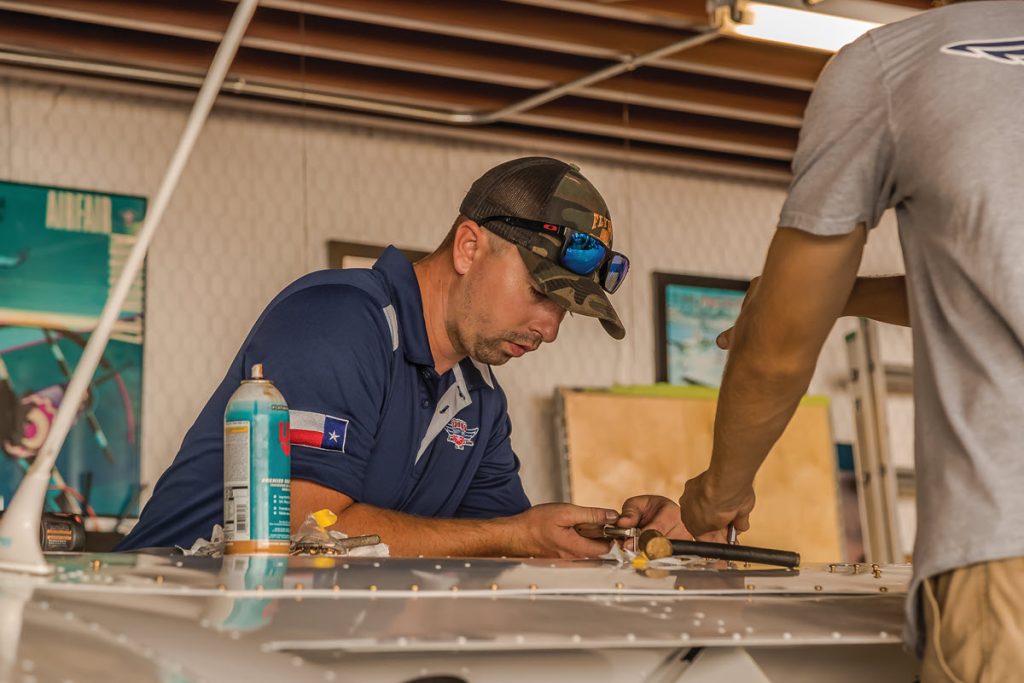

The 150: Backbone of the Aero Clube
The 150 is ideal for the Tango Thirty One Aero Clube because it’s designed for students and entry-level pilots to handle the heavy use, inexperience, and inevitable hard landings associated with flight training. As Kevin pointed out, “The 150 has trained half the world to fly. It trained me to fly back in the early ’70s. Parts are reasonable. They’re economical to operate. They’re pretty durable, and so far, every time these youngsters bring them back, they’re reusable.”
As far as restoring the 150s, Kevin prioritizes the work as, “First, the engine, second is avionics, and last on the list is cosmetics. Pretty interiors don’t make them fly, but structural soundness is good.” With avionics, for the 150, “All we need is the nav/comm, ADS-B Out, and we’ve actually got some GPS in these little airplanes now, although I take the cards out of them sometimes when they’re going cross-country because I want them to know how to do dead reckoning — like Oshkosh, to make sure everyone can find their way.” The Clube members have done their share of cross-country flights. For the past five years, they’ve flown to EAA AirVenture, with 10 to 15 members making the trip each year.
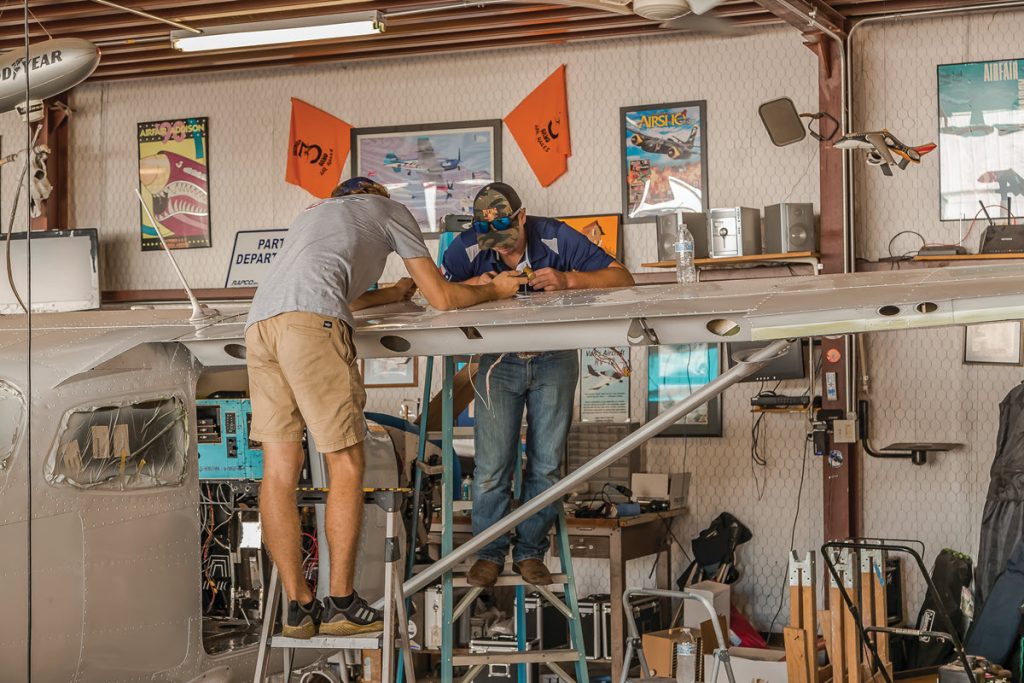
Club Member Comments
The Clube members are probably the best advocates for the program, since they’re the primary beneficiaries, and their enthusiasm is contagious. For instance, Savanna “Lil Thunder” Hunter, a 16-year-old who is new to the club since July, is already working on their latest plane acquisition, a 172. “I installed a D-10, and I’m doing a pitot static system and tubing,” she said. “We just installed a magnetometer in the wing. We’re learning basics on why hardware is named what’s it’s named and why it’s numbered what it’s numbered. How to find hardware and things like that.”
Logan “Mighty Mouse” Griffin, a 17-year-old, one-year veteran of the Clube, recently passed his private pilot written exam, has soloed, and just needs to get his solo cross-country hours to get his license. He aspires to be a commercial pilot. “It’s something I’ve always wanted to be,” he said.
Other current members include Nick “Snaggle Tooth” Heilman, Peyton “Junior’ Dudley, and Ethan “Plow Boy” Chapman. The majority of those who stay active in the club have ambitions to have a career in aviation either as a pilot or mechanic.
| Specifications | |
| Engine | Continental O-200-A |
| Horsepower | 100 |
| Top Speed | 109 mph (95 kts) |
| Cruise Speed | 106 mph (92 kts) |
| Fuel Capacity | 26 gal |
| Range | 420 miles (@ Economy Cruise) |
| Gross Weight | 1,600 lbs |
| Empty Weight | 1,104 lbs |
| Avg. Useful Load | 496 lbs |
| Takeoff Ground Roll | 735 feet |
| Takeoff Over 50 ft Obstacle | 1,385 feet |
| Landing Ground Roll | 445 feet |
| Landing Over 50 ft Obstacle | 1,075 feet |
| Rate of Climb | 670 fpm |
| Ceiling | 14,00 |
| Doors | 2 |
| Seats | 2 |
| Electrical | 14v |
| Dimensions (approx.) | |
| Cabin Width (at shoulder) | 35-1/2 inches |
| Length | 23 feet, 11 inches |
| Height | 8 feet, 6 inches |
| Wingspan | 33 feet, 4 inches |
Select a photo to open a pop-up slideshow

